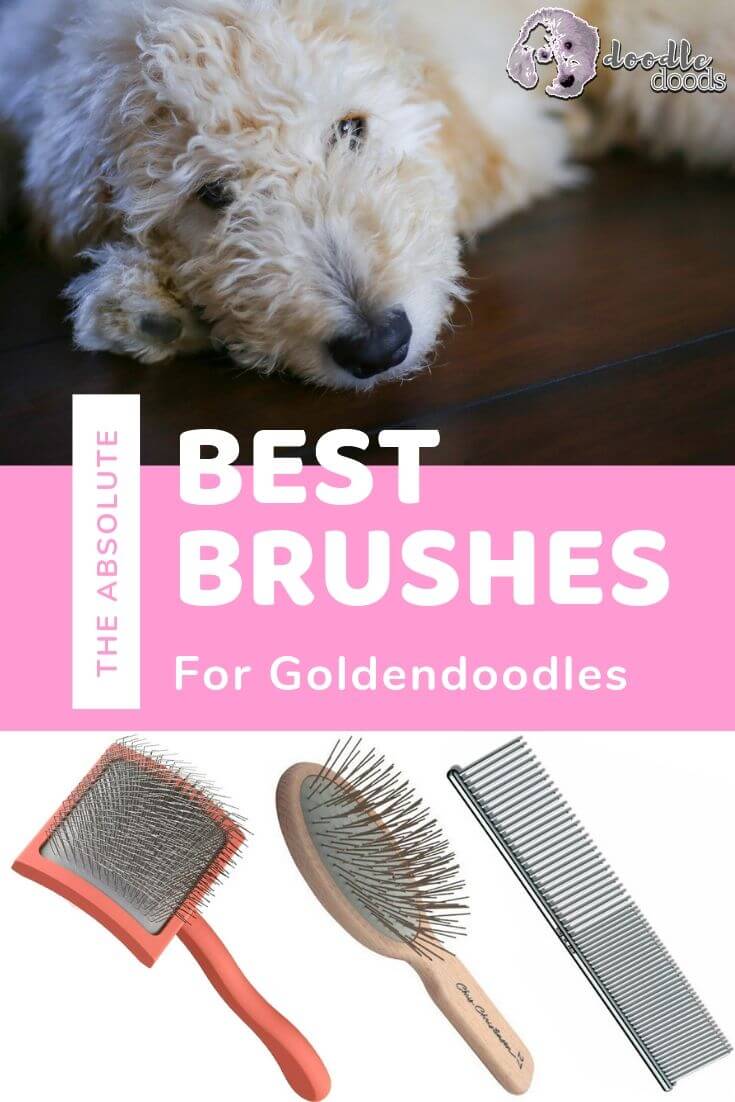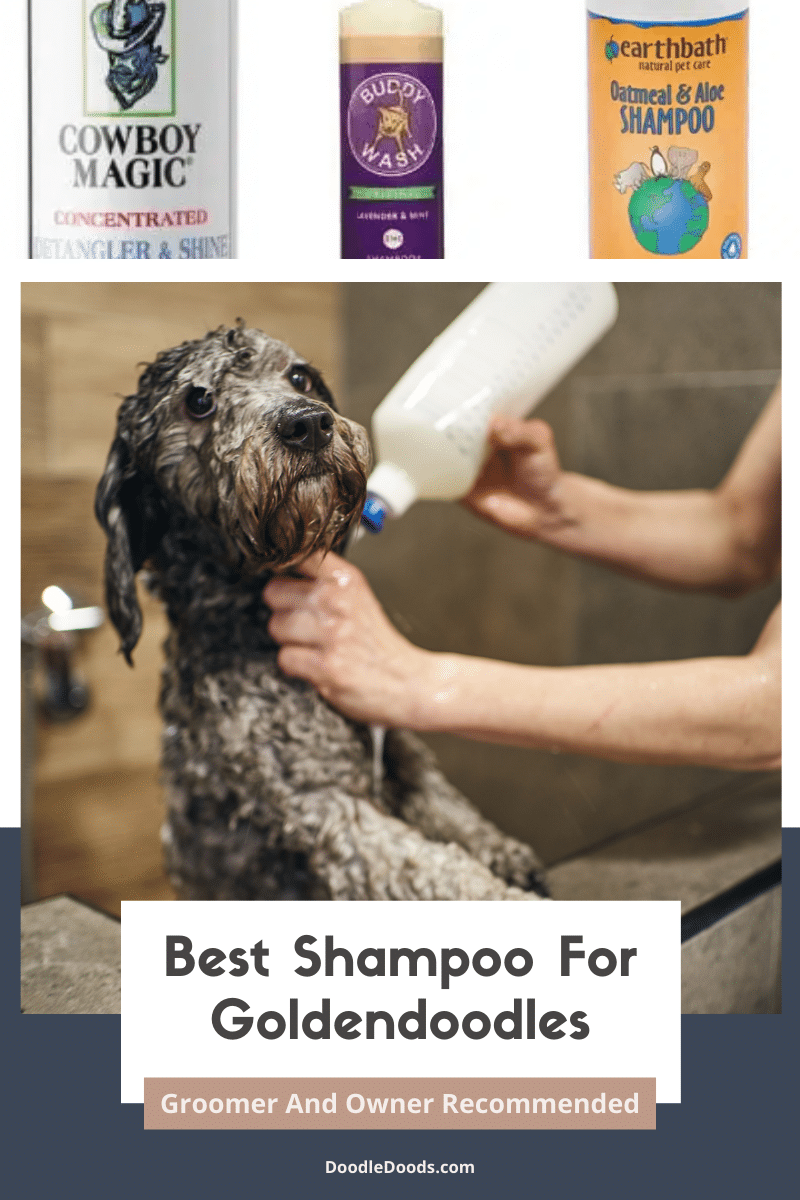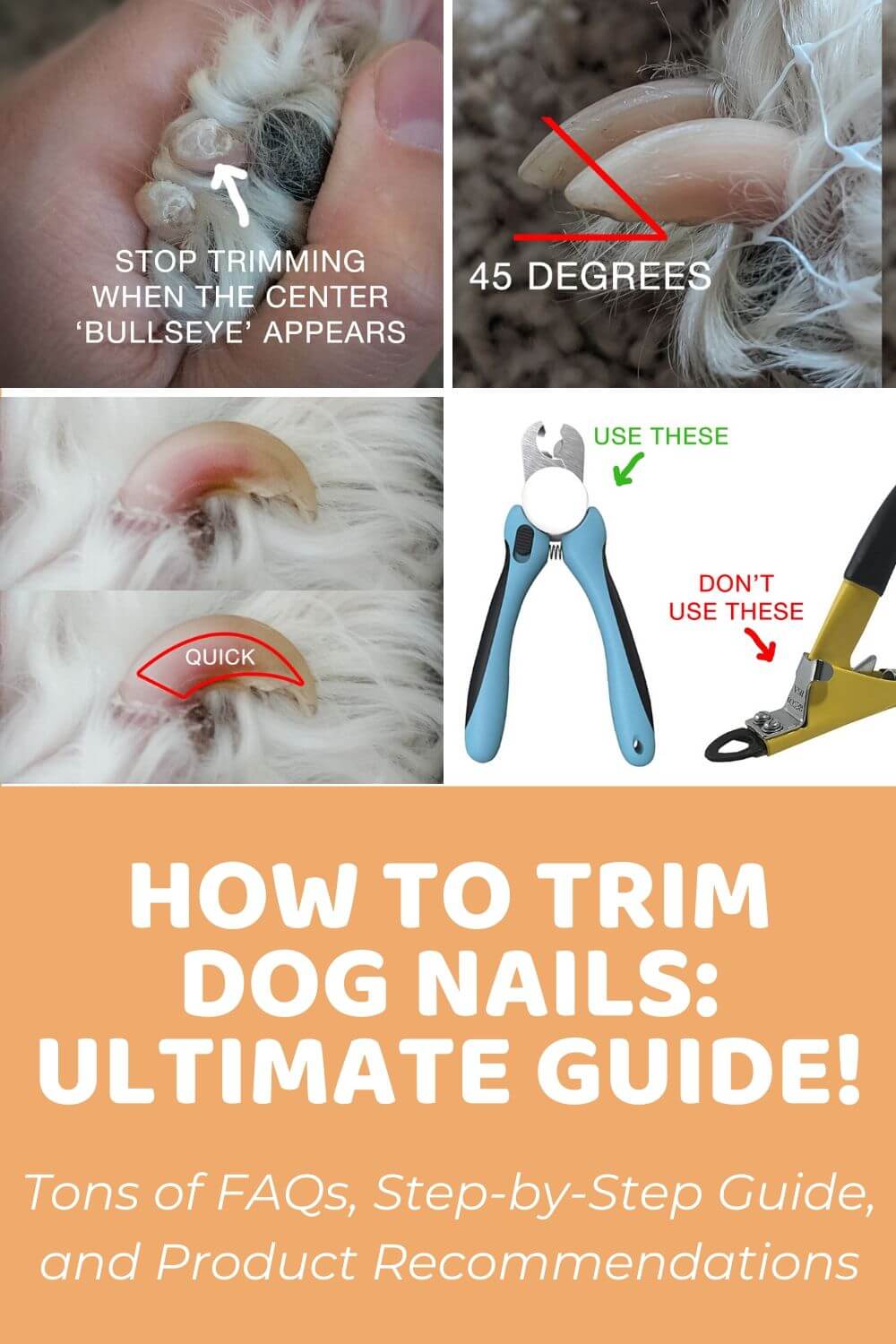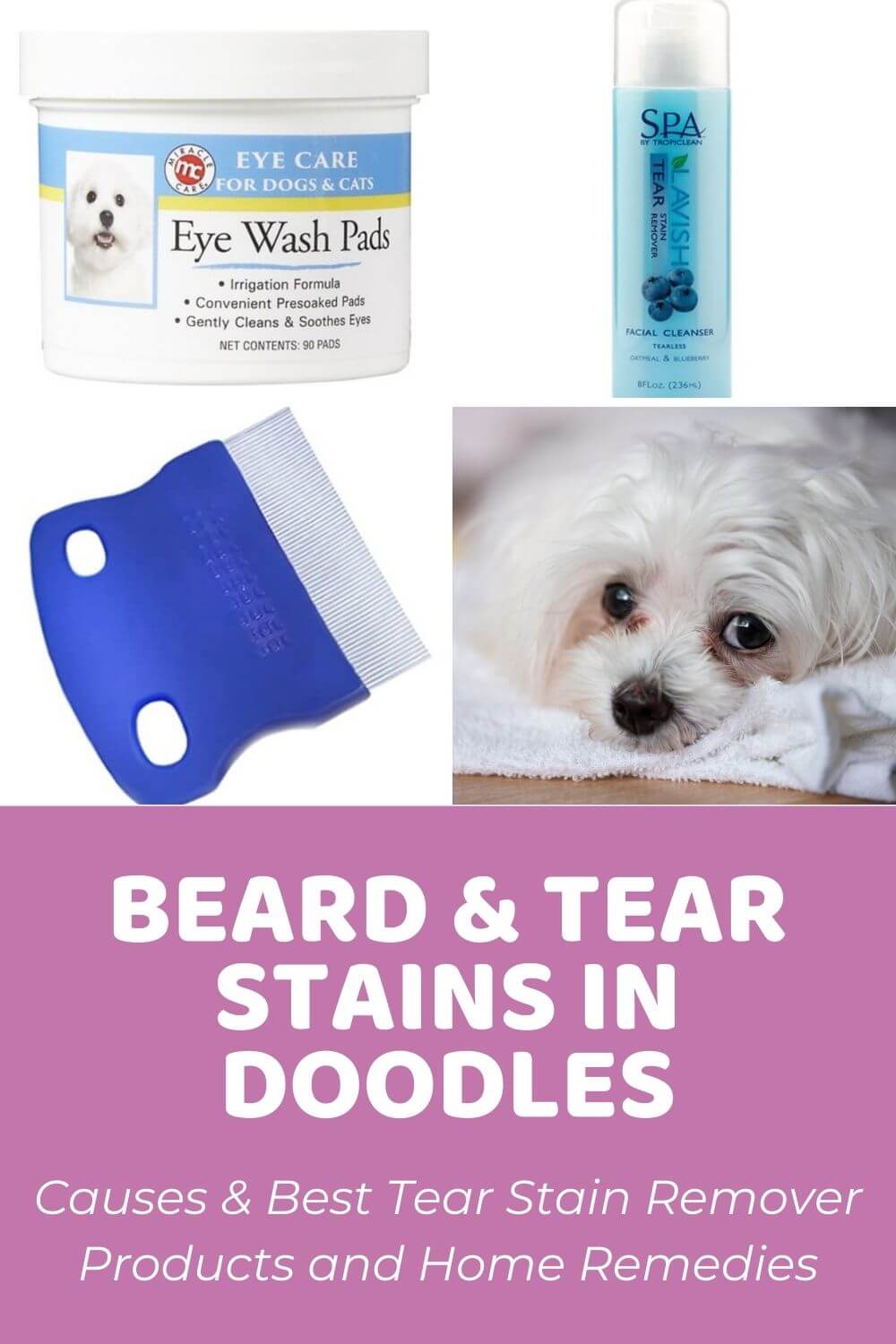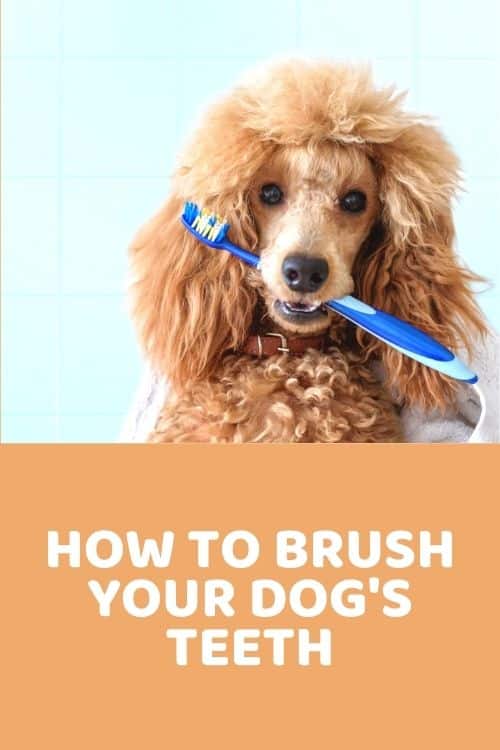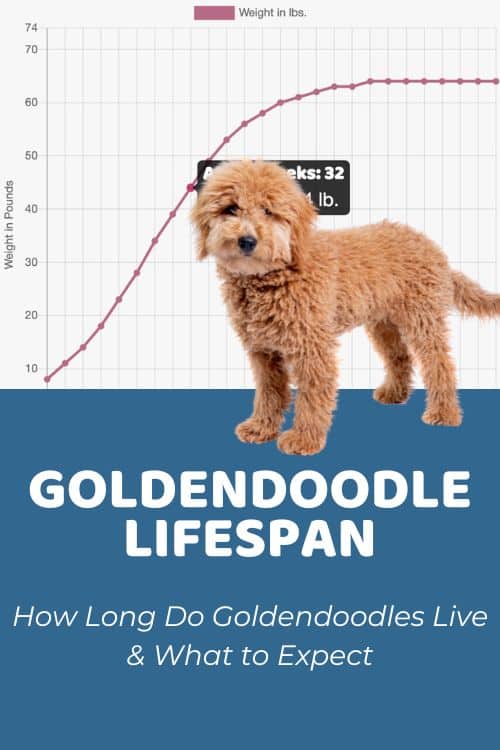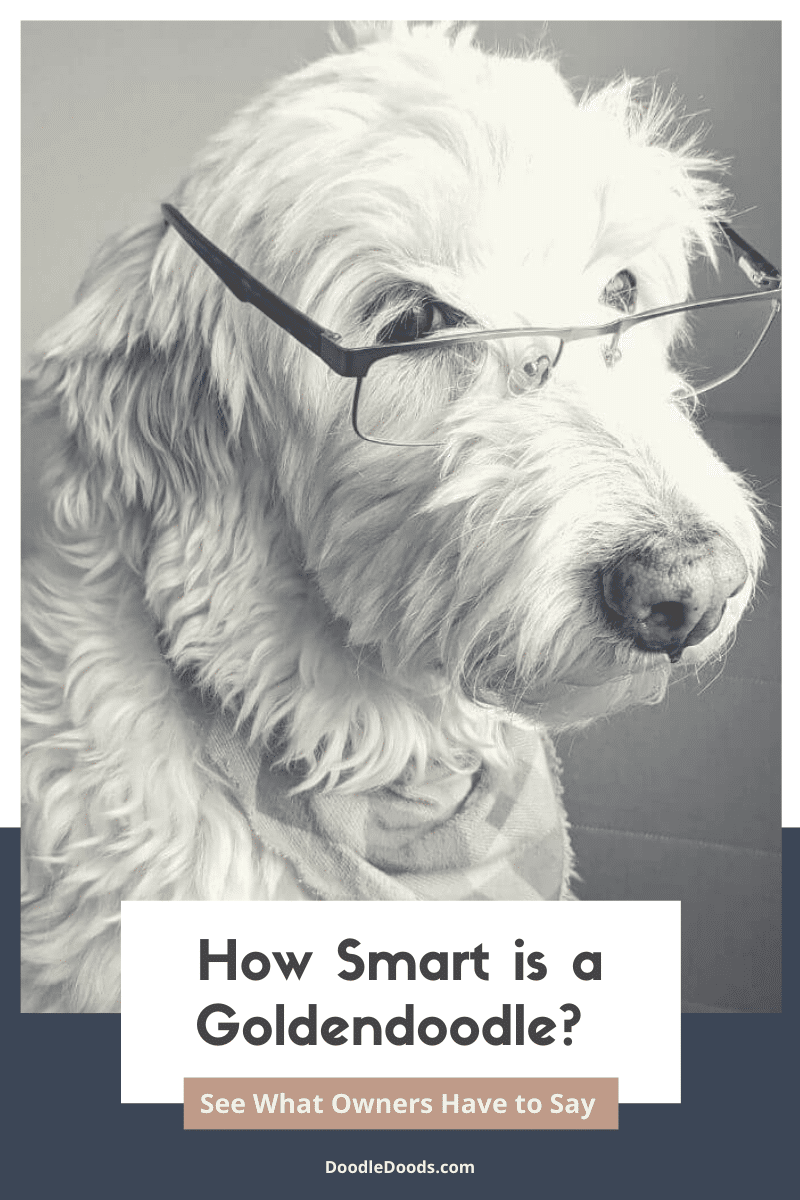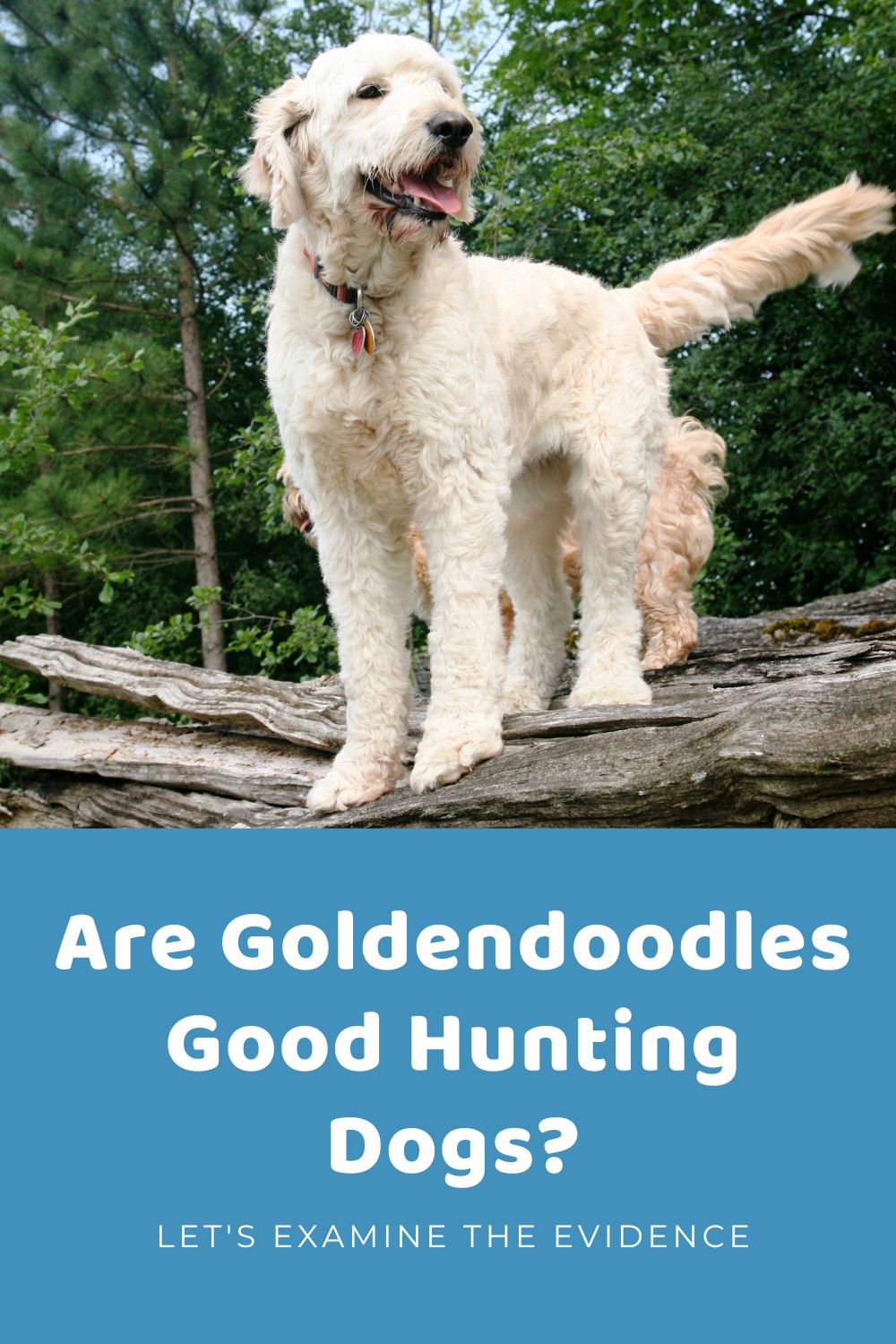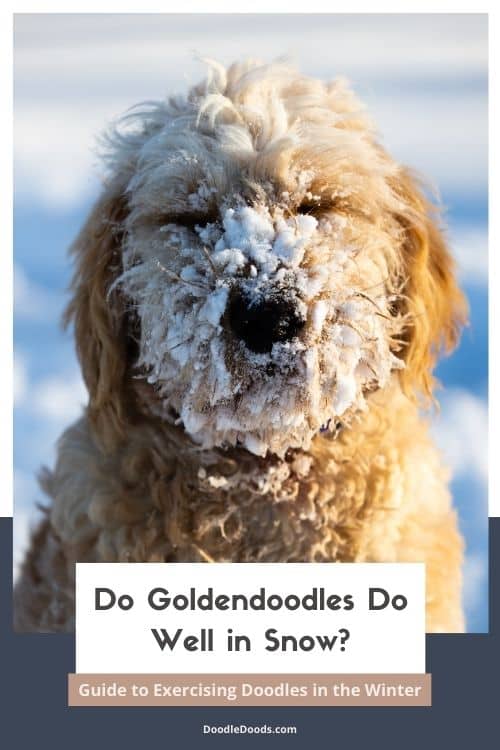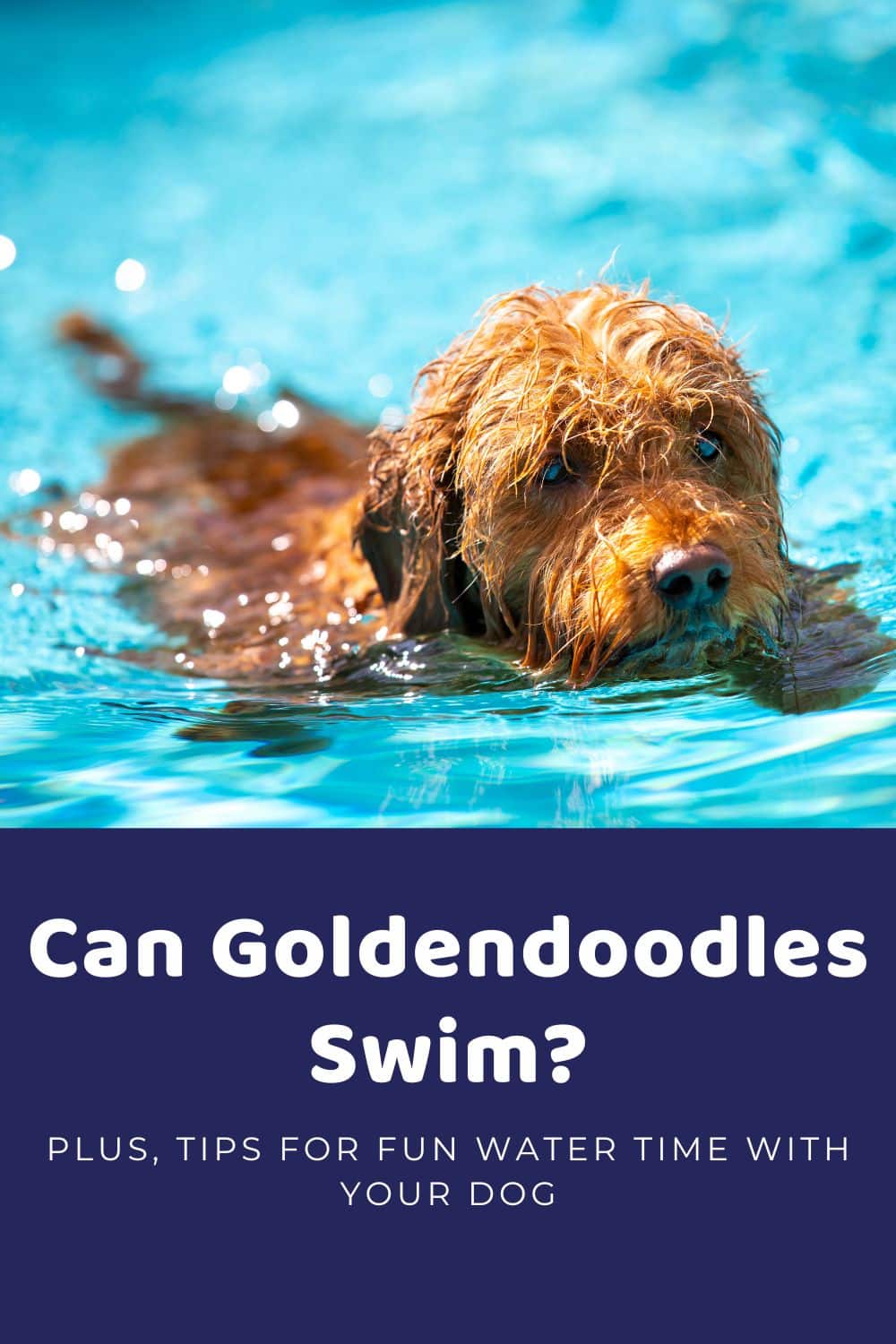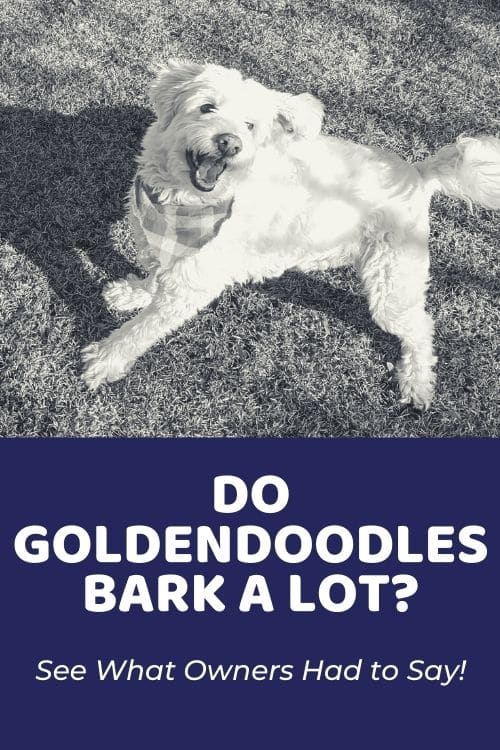Goldendoodles come in an assortment of varieties, different generations, sizes, and colors too. No matter how your pup ends up after shedding their silky, soft puppy coat, you are going to need to put some serious effort into ensuring they remain looking and feeling good too. Fitting grooming, bathing, and more into your daily routine is part and parcel of pet care. So, how often do Goldendoodles need to be groomed exactly?
Well, if you have never owned one of these glorious dogs before, you may need a few tips on the kind of tasks you will need to do to keep them in tip-top shape, not to mention how often you will need to do them. Stay tuned for advice on all this and more as we cover all that grooming a Goldendoodle entails and provide some handy advice on getting it right from the start.
Table of Contents
- Why Goldendoodles Need Regular Grooming
- Sample Goldendoodle Grooming Schedule
- How To Keep Your Goldendoodle’s Coat Healthy
- Bathing Your Goldendoodle
- Other Grooming Necessities
- Frequently Asked Questions: How Often Do Goldendoodles Need To Be Groomed
- How Often Do Goldendoodles Need To Be Groomed: Final Thoughts
Learn How to Stop Shavedowns For Good & Keep Matting At Bay!

Discover the PROPER Doodle coat care routine that gets your pup to cooperate…helps you nip tangles in the bud…and gets groomers to do exactly what you want.
Plus, get $520 worth of Bonus Materials for FREE, including:- Doodle Parenthood Community and Support Group ($190 value)
- Custom Doodle Coat Care Plan Lifetime Access ($75 value)
- Easy to Use Doodle Grooming Tracker ($20 value)
- And MORE!
Why Goldendoodles Need Regular Grooming
Coat care is one of the biggest and most time-consuming tasks of any pet parent. While you may feel like you’ve got away without spending too much time worrying about this by adopting a so-called hypoallergenic hound, the truth is you may have set yourself up for even more work. The thick, wiry, Poodle curly coat requires daily brushing to ensure that the knots and tangles created by loose hair and dirt getting twisted up in healthy coat don’t develop into areas of thick matting that need to be shaved.
However, despite being the whole reason they were created, it’s not a given that Goldendoodles will end up with the single-layered hair coat of their Poodle parent. This depends both on the genes they have inherited and the way those genes play out. In fact, your Goldie may actually end up with the dense, long, straight, or wavy Golden Retriever coat with or without furnishings, or a wavy, long one that sits somewhere in the middle of these two extremes. Predictions about this can be made based on their generation (F1, F1B, F2, etc.).
Each of these coats has its own issues. So both the frequency and the amount of time needed to groom your dog will depend very much on their hair type. As mentioned above, the Poodle coat is the seriously demanding one. Yet, the benefits of this one are the fact that it’s low-shed, making it better for allergy sufferers. The other two are not as tangle-prone but are usually more likely to shed more and, in some cases, quite a bit more if your pup has inherited the Retriever double coat. So you might want to make daily brushing a part of your routine for this reason, if nothing else.
Sample Goldendoodle Grooming Schedule
Here’s a sample Goldendoodle grooming schedule you can follow to keep your dog always looking gorgeous. You can tweak this based on your dog’s lifestyle and skin conditions, but this usually works for most Doods.
- Brushing: Ideally every day, or at least 3 to 4 times a week.
- Nail Trimming: Every week or every other week.
- Hair & Ear Hair Trimming: Every 4 to 8 weeks.
- Ear Cleaning: Clean and dry the ears after every swim or shower. Use a dog ear cleaner weekly.
- Bathing: Before every haircut, or more/less frequently than that. Consider your dog’s skin conditions, lifestyle, and hair length.
- Haircuts: Ideally every 6-8 weeks.
How To Keep Your Goldendoodle’s Coat Healthy
With regards to grooming, you will want to make sure that you have the very best tools for the job at hand. Never discount the importance of a well-constructed, carefully-designed brush. When dealing with such a thick coat as your Goldendoodle is likely to have, whether it be straight, wavy, or curly, most low-end brushes just won’t cut the mustard. At best, they won’t get all the way to the roots of the hair. At worst, they will simply come apart in your hands from all the strain.
That’s why we recommend the Chris Christensen range of brushes. Although a little on the pricy side, most Doodle owners agree that they are hands down the very best brushes for these dogs. Their slicker and pin models come in various shapes and sizes, meaning there is one to suit every dog, whatever their coat type, thickness, and length. Having one of these brushes in your tool kit will save you a great deal of time, effort, and worry. Plus, a sturdy comb is good for getting to those hard-to-reach places and for delicate areas such as around your dog’s face and ears.
Aside from frequent brushing, there are a few other things you will need to do to keep your pup’s coat in excellent condition. These include regular hair trims and bathing alongside other grooming activities, all covered below. Keeping your Dood’s hair clean at a nicely manageable length will make daily grooming less of a grind. Most groomers would recommend a professional brush and cut every 6 to 8 weeks. If you’re thinking of saving a few dollars by tackling your pup’s haircutting at home, you will need to invest in professional-grade clippers that are up to handing their coat.
Bathing Your Goldendoodle
Bathing forms the last prong of the coat-care triad. Many owners do not relish this chore and are grateful it only needs to be done around once a month. Any more than this, and you will be washing away the essential oils that keep your pal’s hair and skin healthy. If your Goldie has a tendency to roll in nasty things, you might consider using waterless shampoo to clean and freshen them up a little. Although you might need to learn to love a faint tinge of Eau de canine about the place.
If you can get your dog used to being bathed right from the time they are a puppy, this will pay dividends as they get older, making bath time a far easier experience for the both of you. With two water-loving breeds in the mix, this shouldn’t be as challenging as you think. Treats really help with encouraging your pet to enjoy bath time. Slick some peanut butter on the side of the tub, and this should keep your pooch busy as you get on with the business of cleaning them. It’s also a good idea to put a non-slip mat or old towel in the bath to give them a sense of security as you clean and condition their hair.
Step One
Make sure to give your hound a thorough going over with both a brush and a comb before popping them in the tub. If you leave knots and tangles until post-bath time to handle, you’re going to be in for a world of trouble. Both of these tend to tighten when they come into contact with water, leaving them all but impossible to remove without the help of clippers. As you brush, focus on the places where tangles tend to accumulate – under the legs, around the tail, on the ears…
Step Two
Have everything close by to keep things simple. You’ll need a dog towel, a bathing brush if you like to use these, and of course, a decent dog shampoo. With so many different kinds available, this you will need to determine based on your pet’s coat.
- For a Goldie-type coat, you might have issues with shedding, so opt for a deep-cleaning shampoo. This can wash away dead hair and dander while locking in moisture to reduce the amount of hair your pup is losing.
- For a Poodle-type coat, your biggest struggle is going to be knots and mats. So you want a shampoo/conditioner combo that is deeply nourishing and that can help keep tangles at bay. Shampoos with silk proteins are excellent for this.
- With the wavy in-between coat, the lowest maintenance of the three – a general all-rounder should do the trick. A 2-in-1 formula is a good pick. Depending on your pup’s habits, you might want one with odor control to keep them smelling fresh.
If your pal is a nervous bather, then a shampoo that contains nerve-soothing essential oils such as mint or lavender can be a real life saver. Conditioners and detangler sprays can also be welcome additions to your Doodle bath-time toolbox.
No matter the situation, never substitute a people shampoo (or any other product) unless it is a baby blend. These tend to be pH-balanced rather than acidic like the regular kind. These are terribly drying for your pet’s skin and will likely lead to furious scratching.
Step Three
When your pooch is squeaky clean, get them out of the bath and get them dry as quickly as you can (especially if it’s a little on the nippy side). Pat, your pup dry. Never rub curly hair, as this can create new tangles for you to deal with. You might also use a high velocity blow dryer on a cool setting if your pup is up for that. Again, getting your dog used to this from an early age is a good idea.
Once your fur baby is fully dry, then you can give them another good brush through. Never attempt to do this while they are still wet, as damp hair isn’t as strong as dry hair and can break more easily.
Other Grooming Necessities
Aside from coat maintenance, there are a few more aspects to the grooming routine necessary to keep your dog in the best health possible. While these will not need to be done with the same frequency as brushing, they should still be done on a weekly or bi-weekly basis, depending on the specific needs of your pup.
Cleaning your Goldendoodle’s ears
Ear infections, both bacterial and fungal, are common in drop-eared breeds like Doodles. These are further exacerbated by the presence of a lot of hair in the ear canal – which is why some people like to pluck these. Ear infections can be irritating, uncomfortable, and downright painful for your pup, which is why you are going to want to clean (and dry) their ears often to keep the chances of this happening low.
Luckily there are plenty of dog ear cleaners and wipes you can use to remove dirt, discharge, and waxy buildup. Most of these are designed to deal with the external parts of the ear, although you can also get liquids that can be dripped down into the ear canal for a more thorough clean. Both are vet-approved and should be included in your grooming routine. Stay away from q-tips. These can do more harm than good.
Clipping Their Nails
Overly long nails might not seem that much of an issue. However, they can place uncomfortable pressure on your canine’s toes resulting in varying levels of discomfort through to outright pain and very sore feet indeed. This is especially the case if much of your dog’s walking is done on hard surfaces such as sidewalks and wooden or concrete floors. In severe cases, the nail can curl back up and penetrate the paw pad.
Many owners shy away from clipping their pet’s nails for fear of hurting them. However, it is something that needs doing. If you opt to leave it to the professionals, all to the good. If not, you’ll have to get to grips with handling snips (or grinders). Increase your knowledge and experience with this tedious task by carefully reading through the best way to trim your Doodle’s nails.
Checking Their Eyes
Visual impairment can impact various dog breeds, including the Golden Retriever and the Poodle. This typically occurs when they are getting on in years. Therefore it pays to know how to test your dog’s eyesight so that you can let your vet know about any issues as they begin. Look carefully into your pooch’s eyes to check for milky spots, cloudiness, or signs of discharge beyond what is normal for your dog.
Beyond this, it may be the case if your pet seems upset with their area, i.e., if they are rubbing their eyes with their paws or against your furniture, they might have an injury there. Look for signs of a foreign object, scratches, discoloration, redness in the eye, or cuts and swelling around the eyes. If you do notice any of these present, it’s best to take your pal to the vet rather than trying to deal with the issue yourself.
Teeth, Tongue, and Gum Brushing
Finally, maintaining dental health is another crucial part of caring for your dog. It’s not just stinky breath that you are fighting against here. You need to remove leftover food and plaque patches to avoid the kind of bacteria buildup that can have severe consequences for your pup’s health. Luckily dental chews are great for fighting against these issues and will reduce the frequency of which you will need to brush their teeth.
When the time comes, though, make sure you have both a pet-safe brush and canine-brand toothpaste. The bristles on a dog brush are softer than a people one, making gum injuries far less likely to occur, and human toothpaste can contain ingredients that are toxic to dogs. Once you have these to hand, start slowly building your pup’s confidence that this won’t hurt, use circular motions and add in plenty of pets and praise.
Frequently Asked Questions: How Often Do Goldendoodles Need To Be Groomed
How long does it take to groom a Goldendoodle?
The amount of time it takes to groom a Goldendoodle depends on a number of factors, including their size, coat type, and hair length, how frequently you do the job, the tools you have, and how well your pup has adapted to being groomed. A Standard-sized, curly-coated dog will generally take the most time – maybe around 20 to 30 minutes a day – and a smaller or straight-coated one, perhaps 10.
How often should I brush my Goldendoodle?
While it’s pretty much up to you to suss out the unique coat care needs of your pup, we actually recommend daily brushing no matter what their coat type is. This helps you to stay on top of things and not let knots accumulate, or hair fall all about the place. It also means that you won’t be spending hours and hours on the task as you would be if you were doing it just once a week.
Is it hard to take care of a Goldendoodle?
Taking care of your Goldendoodle might pose a bit of a learning curve at the start. However, getting into a routine should make it a little easier to bear. Doodles aren’t the lowest maintenance of dogs, but neither are they the highest. A little daily effort should make it all straightforward enough and keep your pet happy and healthy to boot.
How Often Do Goldendoodles Need To Be Groomed: Final Thoughts
Goldendoodle grooming is a vital part of owning one of these delightful dogs. We think many would agree that the rewards are worth the effort spent in keeping their coat in good condition. This has many aspects, from brushing to bathing to coat and nail clipping. However, it shouldn’t be that tough to pick up with a bit of research and practice. Luckily there are plenty of excellent tools to help you along the way, and we hope this article has proven helpful in identifying what these are and how to use them when caring for your dog on a daily basis.
Want to Learn
DIY Doodle Grooming?
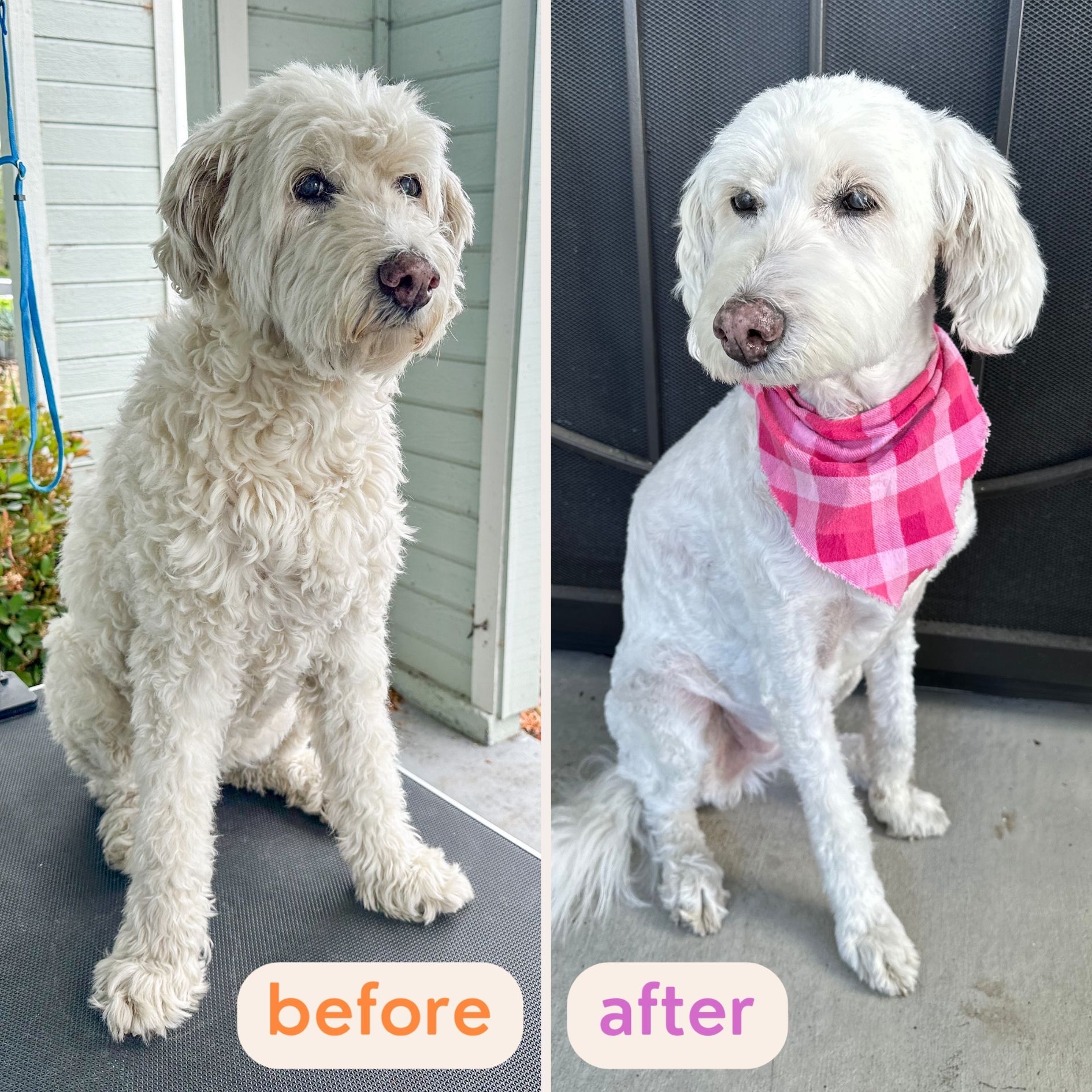
 “Every concern and question I had now has clear, practical solutions.” – Paula D.
“Every concern and question I had now has clear, practical solutions.” – Paula D.
 “These lessons have provided tremendous amounts of information.” – Steve B.
“These lessons have provided tremendous amounts of information.” – Steve B.
 “Buy the course and complain about how easy it is!” – Chris S.
“Buy the course and complain about how easy it is!” – Chris S.
Learn How To Groom Your Doodle At Home…
Safely…And Without Confusion:
The information on this page is for informational purposes only. It is not intended to be a substitute for professional groomer advice. Always seek the advice of your groomer, veterinarian, or other qualified animal health provider with any questions you may have.


